

USU Eastern hosts exhibit “Here, There, and Everywhere” to display art from various campuses. News 02 Lifestyles 08
COSAS puts on Earth Week and other sustainable initiatives. Sports 13
The recruitment process for USU athletic coaches varies from campus to campus.
Week of April 15, 2024 Utah State University, Logan, Utah
statewide
Gallery East features statewide students
By Reagan Thomas NEWS REPORTER
Utah State University Eastern collaborated with the Logan and Blanding campuses to provide a month-long art exhibit that was open to the public in March.
The exhibit, “Here, There, and Everywhere,” included student work from each of the campuses.
It was the first time a collaboration like this was seen between Logan, Blanding and Price.
According to Noel Carmack, associate professor of art at USU Eastern, several different types of artwork were featured at the Gallery East, including painting, drawing, 3D works, photography, illustration and ceramic pieces.
About 30 students from the three campuses participated.
Carmack said exhibits like these provide opportunities for students to display their own art and see real art firsthand.
“I think it’s great to have people see your artwork because it opens some doors for opportunities for people to contact you,” said Elizabeth Foley, an art student at USU Eastern.
Foley had a few different pieces in the exhibit, including a ceramic version of Thing, the disembodied hand from the 1960s TV show, The Addams Family.
“I made it out of clay using just coils and slabs,” Foley said. “I didn’t really like the ceramic glaze, so I acrylicly painted it.”
Having experience in art galleries is a good opportunity for students to build their art portfolio, Foley said. Along with the resume aspect, the real-life experience of displaying your art is helpful.
“You get to see the process of framing or wiring it so it hangs up,” Foley said.
Foley said she did art all the time as a kid, because it helped her process her emotions and cope with stres. Her high school art teachers helped her display her art in the Springville art museum shop. This is where some of the art professors from USU Eastern met Foley and encouraged her to join the program.
“I really liked the energy they were giving. I also took a tour of the campus,” Foley said. “They have some amazing resources here for both 3D and 2D art.” Because of all of these reasons, and because the school was cheap, she ended up at USU Eastern.
“This degree in art has taught me a lot,” Foley said. Foley is one of the first students in the associate of art program at USU Eastern.
“They’ve given us lots of resources to further our art opportunities,” Foley said.
According to Carmack, the program was created about two years ago. Before then, USU Eastern only offered art classes as electives. There are about 20 students involved in art at the campus, and five or six declared art majors.
The exhibit has been in the works for a while, Carmack said. He said during faculty meetings he’d think, ‘We’ve got this beautiful gallery’ that needed to be used.
The administration thought of using artwork from faculty, but someone suggested student work would be better to help make more connections between the schools.
The gallery is one of the first places the administration takes campus visitors.
“It’s kind of a hallmark,” Carmack said. “It’s a little bit of a struggle to get people to actually go into it.”
The gallery is located in a main crossing area near the front of campus, so many people walk by it. Carmack isn’t sure, however, if students know that the gallery is free and open to the public.


Several times throughout the year the gallery hosts visiting artists who bring their own art pieces and visit the school, talking to students about being an artist. these artist hail several of the surrounding states, including Colorado and Idaho, and many artists from Utah.
“I love that part because I can ask the artists about their process or their motivations,” Foley said. ”They’re just people. Because they’re doing their presentation and they’re all nervous. I’m like, ‘Oh my gosh, you are like me.”

— reagan.thomas@usu.edu
Page 2The Utah Statesman, April 15, 2024
SUBMITTED PHOTO SUBMITTED
PHOTO
Reagan Thomas is an avid news junkie studying journalism and political science. When not perusing the latest stories of the day, she enjoys running, hiking, and stargazing.
History of the Uintah Basin campus
By Justin Brewster NEWS REPORTER
Of the many statewide campuses, the oldest aside from Logan are Utah State University’s Uintah Basin campuses in Roosevelt and Vernal.
Founded in 1967, Uintah Basin started out not as a single campus, but as an education center in rented space. Most classes were held in various locations, including a high school and technical college in Roosevelt and a junior high school in Vernal. Classes were often held in the evening to avoid sharing the same space as the daytime students.
“Rural Utah in the 1960s — the percentage of high school graduates who went on to attend college at all was very small, and those who completed a bachelor’s degree was many times below even the state average of the population centers where higher education was readily available,” said John Barton, principal lecturer of history at the Roosevelt campus.
Barton said for many in rural Utah, if someone couldn’t take over a struggling family farm, that meant looking for a job — a job that might not even be available.
“Most people, if they are not raised in a family who has somebody that went to college, they have a hard time even wrapping their minds around how you go about that,” Barton said. “Let alone finding funding for such.”

Barton, who also wrote a book about the history of USU’s statewide campuses, explained why USU Uintah was needed and how it came to be.
“There had been an attempt, a desire within the Uintah Basin to get a community college,” Barton said. “The state legislature and governor’s office had been favorable on that and had set aside money — $300,000 — but it wasn’t enough, and it wasn’t focused on detail.”
Daniel Dennis, a veterinarian, was elected to the state legislature with the explicit goal from both him and his constituents to get some form of higher education into the basin to alleviate this issue.
This led to the creation of a technical college, which has changed its name multiple times and is currently known as Uintah Basin Technical College. However, this still wasn’t enough.
Upon hearing about the money set aside by the legislature, Dennis began working with Alva Snow, who was on the board of trustees for both USU and Snow College at the time.
After meeting with administrators at USU, they planned to put the school under university extension, as there were already 4-H agents and extension offices throughout the state. By 1967, they began renting an old house to be a reception center. The vast majority of classes were concurrent enrollment courses with the high school in Roosevelt, with a couple evening classes.
“That was the genesis of distance education, not just in the Uintah Basin, but for Utah State University,” Barton said.
While there were short term attempts in the past, as well as courses and visiting professors since the early 1900s, this was the first long-term plan for an institutionalized program for off-campus distance education.
One of the first programs was a bachelor’s in education, with minors in English and history.
For many rural communities at the time, an issue was new teachers coming in, staying for only a few years and then leaving for other places once they had enough experience. The program was started with the hope that locals would learn how to teach and stick around the area.
As time went on, the student body began to grow, as did an alternating schedule of classes between Vernal and Roosevelt.
Today, students can choose between attending Vernal, Roosevelt or an online experience.
The expansion also led to the creation of two part-time faculty positions one in theater arts and the other in mathematics.
Furthermore, a contract was made with an airline based out of Ogden to fly professors from Logan to Roosevelt to teach. Some professors went even further, oftentimes flying to Moab. This flying program would continue for some 30 years.
The campus became increasingly self-sufficient. From 1984-1992, Uintah Basin was among several campuses to begin experimenting with electronic distance classes. By 1994, it was getting national recognition for quality education alongside the Brigham City and Tooele campuses. This led to all three being declared regional campuses by USU’s 13th President, George Emert.
This would only change in 2019, when the regional campus system was renamed as USU Statewide Campuses. USU Uintah Basin, the pioneer of the whole system, is still listed among them.
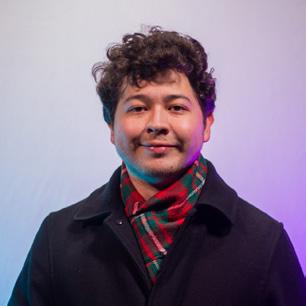
Justin Brewster is a first-year student currently studying international studies and flipping a coin to figure out what he is going to minor in. In his spare time, he enjoys video games, learning about history and political and social sciences and writing.
—justin.g.brewster@usu.edu

Page 3The Utah Statesman, April 15, 2024 Student-run newspaper for Utah State University since 1902. Reporting online 24/7. Printed weekly during the school year. FREE SINGLE COPY THE BOARD Leah Call managing editor editor@usustatesman.com 435-797-1742 Caitlin Keith news editor news@usustatesman.com Jack Johnson sports editor sports@usustatesman.com Avery Truman lifestyles editor life@usustatesman.com Maren Archibald copy editor copyeditor@usustatesman. com Heidi Bingham multimedia editor photo@usustatesman.com For advertising inquiries studentmedia@usu.edu Student Media Office TSC 118 435.797.1775 Cover art by Heidi Bingham
DESIGN BY Scott Hayes
CAPS arrives at Blanding campus
By Aubrey Holdaway NEWS REPORTER
Amid soaring stress levels and mental health distress among college students, a new Counseling and Psychological Services office has opened at Utah State University’s Blanding campus.
All USU students who live within Utah are eligible for CAPS mental health services. All USU students who live within Utah are eligible for CAPS mental health services. According to their website, most services are free, confidential and not included on academic or university records.
According to a December 2023 study from Access Across America, only 33.5% of adults in Utah who were diagnosed with a mental health disorder received specialty care in 2021.
CAPS strives to minimize this issue for all USU students, including those attending statewide.
Justin Barker, a psychologist with statewide campuses, said the decision to introduce a CAPS office at Blanding came as a result of increasing need for mental health resources for students.

BLOTTER POLICE UTAH STATE
3/26/24
- Emergency responders responded to two fire alarms at Maverik Stadium. The first alarm was determined to be a false alarm initiated by the system. The second alarm was found to be the result of an individual intentionally set off the alarm. The alarms were reset and officers informed the individual that it was illegal to initiate alarms without an emergency.
“We’ve had lots of demand for our mental health services, and there’s become a greater focus on making sure that we provide this support,” Barker said.
Priscilla Arungwa, director of students at Blanding, believes the availability of face-to-face services is instrumental in supporting students.
“Over 70% of our students identify as Native American and prefer in-person counseling, although they are also open to virtual sessions,” Arungwa wrote in an email to The Utah Statesman.
Barker hopes to make strong connections with the students.
“We’re really striving to find a therapist who is Native American or who has training or experience working with Native American students so that we can accommodate those needs,” Barker said.
Arungwa believes that the addition of a therapist on campus fosters a strong sense of trust and community among our students.
“By offering on-campus mental health services, we demonstrate our commitment to our students’ holistic well-being, encompassing both academic and personal success,” Arungwa wrote.
Many of the students who attend the Blanding campus are non-traditional and have additional stressors that impact their lives and education. According to Barker, mental health services can be an incredible support in these cases.
“We have data that supports the idea that our statewide students tend to have poor mental health because of all the demands that they have on them,” Barker said. “But I feel like we’ve been able to help a lot of students accomplish their goals of getting their degree.”
Arungwa agreed that therapy can be crucial to the success of many students.
“As anyone who has sought therapy knows, sometimes just one or two sessions can make a significant difference,” Arungwa wrote.
Currently, services at Blanding are provided by statewide employees, but CAPS recently got funding for and
3/27/24
- An officer assisted a person at Mountain View Tower in need of medical assistance due to an injury. The officer took the individual to receive medical assistance and gave them a ride home afterwards.
3/28/24
- An injured cat was reported hiding under a vehicle near Huntsman Hall. The responding officer searched the area and was unable to locate the feline.
3/29/24
- Smoke from a woodburning kiln leaked into the building through open windows alarming individuals inside who contacted safety officials. The officials responded and found no safety threat.
is in the process of hiring a dedicated therapist for the campus.
“Our Blanding person will provide services to everyone down in that area,” Barker said. “We often get referrals, but sometimes those referrals don’t follow through because they would prefer to meet with somebody in person.”
CAPS typically provides short-term, goal-oriented therapy. The counseling services at Blanding are staffed by licensed professionals trained to address stress management, anxiety, depression and relationship difficulties.
“We offer a diverse range of mental health services, both in-person and virtual, tailored specifically to address the needs of students,” Arungwa wrote.
Topics include suicidal ideations, relationship breakups, family trauma or disagreements and counseling for alcohol and drug abuse, as well as support for students coping with past traumas.


— a.holdaway@usu.edu

3/30/24
- A unknown source obtained money from the reporting party fraudulently through a social media scam. No suspect could be determined. The officer advised the individual.
4/2/24
- An officer responded to the report of an individual stuck in an elevator in the Eccles Buisness Building. The person was able to get out on their own. The officer reported the malfunctioning elevator.
4/7/24
- An individual who was not an authorized guest at the University Inn was reported to USUPD. The officers met with the individual, informed them that they were trespassing and escorted them from the building.
Page 4The Utah Statesman, April 15, 2024
Aubrey Holdaway is a junior studying print journalism. She loves doing anything outside, the band Pinegrove and listening to hours of true crime podcasts in an effort to become invincible.
DESIGN BY Scott Hayes
Student voices across the state celebrated at first annual Nighthawk Review Night
By Ella Stott LIFESTYLES REPORTER
From St. George to Tremonton, students across Utah State University statewide campuses have the opportunity for their voice to be heard in USU Eastern’s literary journal, “The Nighthawk Review.” The journal had its first celebration night on April 2.
Jason Olsen, associate professor of English at USU Eastern, is the faculty adviser of the journal.
“I started in 2008. Back then, it was called the College of Eastern Utah,” Olsen said. “I had a colleague give me old issues, and there was one from the 1970s.”
According to Olsen, the issue from the 1970s was called “Rainbow World.”
“Which is fantastic, but I’m glad we changed it,” Olsen said. “There’s a deep history and connection to USU Eastern with this journal, and I think that’s important.”
The journal accepts submissions of original pieces of writing, including short stories, poems and plays, from any student taking a statewide class.
“I also open it up to Logan students who take classes statewide,” Olsen said. “I get to work with wonderful students in my classes, and I don’t want to exclude them.”
According to Olsen, much of the journal is run by students across the statewide campuses.

“My student editors are the ones going through the material,” Olsen said. “They’re going through and looking for something that feels professional and carefully written, something provocative, like this is something that is going to grab my eye in a certain way.”
Olsen said the team gets a large variety of submissions from students in different fields of study and locations.
“It’s really diverse,” Olsen said. “Even though we’re spread out over all of these campuses, we are still able to create this really cool thing.”
The celebration event took place in the Library and Learning Commons at USU Eastern.
Michael Harris, head of the USU Eastern and statewide library services, said they were happy to house the event. Harris said the inspiration for hosting the Nighthawk
Review night was having a counterpart to the fall local authors night.
According to Harris, this used to be one of the only events put on by the library. One of Harris’ goals since being hired has been to increase the amount of events the library hosts.
Harris said part of this goal is by shifting one of the front spaces of the library to a lounge.
“We actually just put in a little coffee shop for students,” Harris said. “We want kind of a poetry night vibe. We have the coffee, and we have the nice, comfy seating. Maybe just turn down the lights and get a little jazz music going.”
Harris said he hopes the area will solidify as a lounge as they increase the amount of readings at the library.
“I was trying to think of what would be a good event for the spring,” Harris said. “That’s when I came up with this idea of, ‘Well, we do this local author night that’s for someone off-campus. Wouldn’t it be cool to have, essentially, a night for the students to read works that they are publishing in The Nighthawk Review?’”
Since the event was going to happen before the publication of this year’s magazine, they decided to focus the event on past editions.
Olsen said the hope is next year’s celebration night will have the writers and editors of this year’s magazine read their work.
“This year, I invited several contributors to the journal to come and asked them to come prepared if they wanted to read something from it,” Olsen said. “Maybe the future will have an open mic night.”
Aimee Lauritsen is in the special collections and archives department at the USU Eastern library.
“When I took over the position, we only had one thing from our collection available digitally through the USU Digital Commons,” Lauritsen said. “It’s been my goal to try and get things more digitally accessible.”
Lauritsen said one of the collections she has been working on digitizing is literary journal.
“We felt like it was very important for us as the library to support our student publication,” Lauritsen said. “I’m pretty proud of the fact that we now do have the Nighthawk Review available online.”
Lauritsen said it has been rewarding to have past students excited to come back and see the work they had published in the archives.
“Life is hard once you’re no longer a student, and you don’t always get that opportunity again,” Lauritsen said. “What a neat way to go back and visit some of your accomplishments and see how much your thinking has changed.”
According to Lauritsen, when Harris had the idea to host the Nighthawk Review night, she was able to go through the digital archives and work with Olsen to reach out to past writers and editors of the magazine.
Lauritsen said she is excited for the future of the event and has hopes it will continue for many years to come.
“I think it’s so important to be starting a tradition,” Lauritsen said. “It’s a way to celebrate students when they are

students.”
Harris said this night is an important step toward connecting USU Eastern with its community.
“Price is a very small town, and people act like this town doesn’t have a lot of events,” Harris said. “As an institution, we’re trying to connect campus to community. We’re trying to create a culture in Price where we can have these kinds of events.”
Lauritsen said the journal is important for not just USU Eastern students, but all of the statewide students.
“I think that it’s so important to remember that this is a statewide university and it affects many communities all over the state,” Lauritsen said. “How phenomenal is that?”
“It’s absolutely crucial to be able to have an outlet for students who sometimes feel like their voices don’t get heard,” Olsen said. “This is a wonderful place for students to get to have their voice heard and their work shared.”
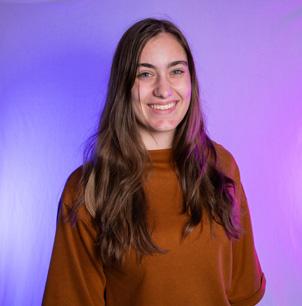
Ella Stott is a first-year student studying English and journalism because she hates money. When she’s not writing, she’s watching sitcoms, eating Greek yogurt and admiring Nebraska corn. —
Page 5The Utah Statesman, April 15, 2024
SUBMITTED PHOTOS
Jason Olsen talking to John Sawyer at the Nighthawk Review Night on April 2.
Lexy Gonzalez reads from the 1998 edition of The Nighthawk Review on April 2.
ella.stott@usu.edu
Moab Museum displays soul of community
By Essence Barnes
REPORTER
Tucked close to the red rocks of eastern Utah near the banks of the Colorado River lies the Moab Museum, only three miles down the road from the Utah State University Moab campus. Since its establishment in 1958, the museum has prioritized uncovering widely unknown or unrecognized parts of Moab’s history through educating and storytelling.
Forrest Rodgers, the executive director of the museum, first began working there in 2018.
“Some people say that museums should be the soul of a community,” Rodgers said. “They should be equipped and prepared to tell the stories of the community’s birth, its growth and development and the important people, places and events that shaped the community.”
The museum was founded at the height of the uranium boom, when Moab was the uranium capital of America. Throughout the ‘60s and ‘70s, the museum began to expand its collections and space. Though still limited in scale at the time, the museum showcased small exhibits that shared stories of the Moab pioneers.
“In the 1980s, the need for a larger building and greater financial stability led to some very generous private donations to construct a building and an annex, which basically created the museum footprint that we have today,” Rodgers said.
During this time, the museum launched a quarterly magazine called the Canyon Legacy. Each magazine issue focused on a theme that reflected an important aspect of Moab culture and history, such as the uranium boom and the ghost towns of southeastern Utah. “In 2014, the museum board and directors started developing some very big, very ambitious plans for raising money to build a new building,” Rodgers said. “Their goal was somewhere between 35 and 50 million dollars.”
Though the campaign was ambitious for a small town of about 5,500 people, they wanted to restore their community with artifacts that had been collected in the southeast corner of Utah — artifacts which had since been transported to and stored at other, larger museums.
“The tagline was, ‘Bring our history home,’” Rodgers said.
When Rodgers was first hired as a consultant for the museum to aid in the expansion, he asked one simple question: “What does your community want?”
“I came to Moab under contract to interview 35 folks from the community to see what their attitudes and perceptions were about the museum,” Rodgers said.
According to Rodgers, the staff used those interviews to create an educational environment that reflected what the community truly wanted out of a museum.
“In the museum language, we would say that it was an attraction rather than a museum,” Rodgers said. “It was a place for people to go and see things, but not a place for storytelling, not a place to care for the collection, etc.”
When the former director of the museum left, Rodgers was asked to step into the role as museum executive director.
“We shifted the focus from objects to stories,” Rodgers said. “We have far more stories — as we share the stories of the Colorado plateau — than we have objects to tell them.”
The museum has optimized their usage of the limited space by incorporating touchscreens into their storytelling. This interactive element has kept older stories of the community alive as new exhibits and artifacts come through the museum.
One of the temporary exhibitions the museum will be showcasing until June of 2024 is called “A Moab Prison Camp: Japanese American Incarceration in Grand County.” It tells the story of a widely unknown period of

Moab’s history during World War II.
“The euphemism that was used was ‘internment camp,’ and that was the language for most of the years since the end of World War II,” Rodgers said. “Until within the last five or ten years, people started calling them for what they were.”
According to the article “Moab’s Concentration Camp” by The Canyon Country Zephyr, 16 incarcerated Japanese Americans were relocated to an old Moab Civilian Conservation Corps camp turned temporary prison camp. The number of incarcerated individuals soon rose to around 54, as so-called “troublemakers” from other camps continued to be sent to the prison camp in Dalton Wells, Moab.
“Our exhibit attempts to share the story of the people who experienced this time of being uprooted from a place they called home and being transported to very unfamiliar places with very unfamiliar conditions,” Rodgers said.
According to Rodgers, this exhibit features images, letters and personal profiles of people who were incarcerated in the Moab prison camp at the time.
Mary Langworthy, the public programs coordinator of the museum, was the lead curator for this exhibit.
“The impetus for creating the exhibit was that there’s been a lot of renewed interest and curiosity, particularly as they’re making a new state park,” Langworthy said. The new Utahraptor State Park, named after the discovery of prehistoric remains found in the area, is currently being constructed at the site of the prison camp in Dalton Wells.
“This is our effort to help our community learn a bit more about this piece of the past that hadn’t really been talked about in a big way,” Langworthy said.
According to Langworthy, many visitors express their gratitude towards this exhibit for addressing and remembering this difficult part of Moab history.
“Storytelling is kind of the basic human language,” Langworthy said. “The power of a story is really tremendous. It helps us understand history, not just as the dusty realm of the past, but as something that has continued relevance for us today.”
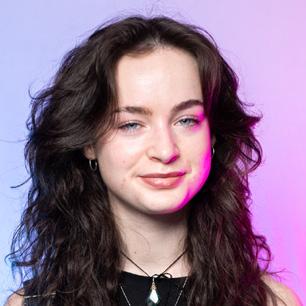
Essence Barnes is a first-year student who can’t come to terms with deciding a major. She enjoys reading, writing and spending money she doesn’t have on coffee.
Page 6The Utah Statesman, April 15, 2024
SUBMITTED PHOTO
LIFESTYLES
Moab Museum visitors look at exhibits.
— a02413313@usu.edu
USU Eastern continues 40-year tradition with Women’s Conference
 By Sam Goodman
By Sam Goodman
Utah State University Eastern holds an annual conference to celebrate the women involved with their program. This year featured activities, a dinner, keynote speakers and a Woman of The Year Award presentation.
The conference is put on by a committee of dedicated staff.
Jessica Prettyman, the business manager for statewide scholarships, heads the committee.
“It’s been going on for over 40 years, and I had the privilege of being the chair this year,” Prettyman said.
At each conference, the committee hosts workshops for participants.
“We have a few activities for the attendees participating, including jewelry making, self-help courses and yoga,” Prettyman said. “Things where they came in and learned specific tasks and trades and stuff like that. Then we go into different sessions related to home and community, business, resumes and fitness. Then we came together and talked about community and how we are going to empower and impact the women in our community.”
Susan Polster, the department head for journalism and communication, has a long history with the conference.
“It started in the 1970s, and USU and BYU would have a women’s conference in Utah, so it’s the longest-running women’s conference in Utah,” Polster said.
The conference was nearly canceled a few years after
its beginnings, but Polster thought the annual event was worth saving. She started in the late ‘90s.
“I thought it was important for women to have a voice,” Polster said. “It was a way for women to get together and have like-minded workshops. They could be seen.”
Committee members strive to have something for everyone, with everything from leadership courses to cooking classes to drug rehab resources.
“We all get something different out of it,” Polster said. “I’m hoping they just learned skills. Leadership skills, organization skills — everyone is different.”
The conference presents a Woman of the Year award, and this year’s winner was Jan Thornton, a social work professor at USU Eastern. Thornton was recognized for work in the field and her community service.
“Together, let’s all move forward, and let’s just keep doing this for other women in our community,” Thornton said.
Sarah Weese was on the committee for the event.
“We just want to empower women. Our goal is to give women on campus self-care and give them opportunities to learn and educate themselves,” Weese said.
Weese is working towards her master’s at USU and is passionate about the work the conference does for students at the Eastern campus.
“It’s important for all of us to enjoy a nice conference, have a variety of learning things in a way that doesn’t put our brain on fire,” Weese said.
To Prettyman, the history behind the conference is what makes it special and important to keep the tradition alive.
“A few years ago, we started this tradition in history for our community and the people, and that got us to where we are at. That’s why we want to continue to do the women’s conferences — because it’s been a part of who we are in our community,” Prettyman said.
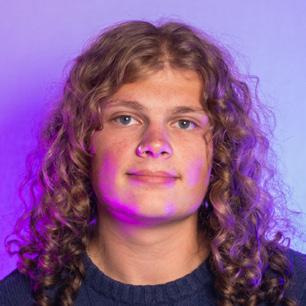

— a02401436@usu.edu
Hi, my name is Zack Ashcraft, and I am the newest DJ here at Aggie Radio. My show is Zack the Record Maniac, which shows off my huge love of music! This show will be a way of trying new things and sharing my favorite oddities over the airwaves. Tune in every Tuesday at 3 p.m. on Aggie Radio 92.3 FM.
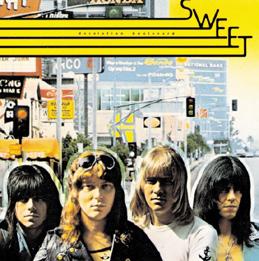









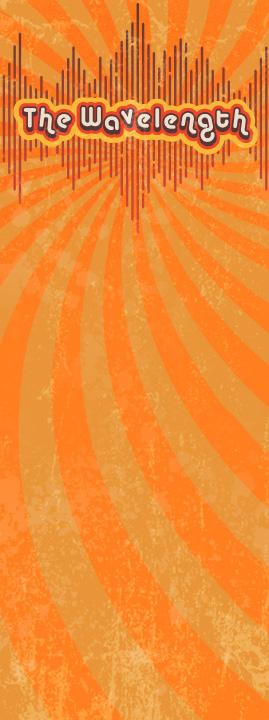

Page 7The Utah Statesman, April 15, 2024
Me Free Sweet
City David Bowie Cat Food King Crimson Flower Valley Licorice Stix Spaced Cowboy Sly & The Family Stone
Set
Suffragette
LIFESTYLES
REPORTER
SUBMITTED PHOTO
Jan Thornton presents to conference attendees.
Sam Goodman is a junior studying journalism with an emphasis in print.
COSAS promotes Earth Week,
By Leah Call LIFESTYLES REPORTER
Soft music filtered through speakers as students rolled up on bicycles, served themselves bacon and pancakes and sat with friends to chat and drink coffee together outside Aggie Blue Bikes. Last Wednesday, the student sustainability club and Aggie Blue Bikes hosted the Bike to Breakfast event as part of Earth Week at Utah State University. Starting on April 8, USU celebrated Earth Week to recognize sustainable and eco-friendly living before Earth Day on April 22.
Environmental engineering major Ella Leonelli is the student sustainability engagement lead in the Christensen Office of Social Action and Sustainability, or COSAS, and planned Earth Week along with other leads in the office.
“We have a lot of really fun events planned, and we’re very excited to see how much we can make an impact on college students,” Leonelli said. “I have been tracking the number of people who are signing up to be involved with the Eco Hunt. It’s really fun to track who’s already registered for that, who’s aware of what’s going on.”
The Eco Hunt is an Earth Week initiative where students who attend events earn points for prizes. Points can also be earned from practicing sustainability during the week. Leonelli plans events to educate students on sustainable practices and advocates for sustainability on campus. She is also the co-president of the student sustainability club alongside Kylee Chadwick. “The overall goal of the club is to bring students together who are passionate about sustainability and to find a community of like-minded people,” Chadwick
said. “Sustainability is all about systems, and that’s important because you hear a lot about the things going on with climate change and relevant issues in the world.”
First-year student Anna Hansen has participated in multiple student sustainability club events and was on the council to plan Earth Week.
Hansen said the council has been working on creating events that will encourage students to implement more sustainable practices in their lives. Bike to Breakfast is an event where students get free breakfast if they bike or walk to Aggie Blue Bikes and bring their own dishes.
“Being involved with the sustainability club has definitely enriched my student experience. There are a lot of interesting and helpful events that they put on,” she said. “I think it is a great opportunity to meet other people who also care deeply about the environment.”
In 2022, the Student Sustainability Office and the Christensen Service Center officially merged into one to become COSAS. Although the partnership is new, the two groups within have existed at the university for a number of years.
“There’s just so much collaboration that we thought we’d make the relationship official,” said Giselle Bandley, COSAS coordinator.
Val R. Christensen, the namesake of the office, was a prominent university administrator and a founder of USU’s first volunteer organization. He passed away in 2022.
Sustainability initiatives across all main and satellite campuses operate under Sustainability Policy 106, which states, “The university is committed to enhancing the quality of life for individuals and communities by promoting sustainability in its operations and academic and service missions.” Bandley advises six student team leads in her role as coordinator.


to shop for free in the fall.
Heather Burr leads Aggies Building Community, a service team within the department where students commit to meeting once a month to discuss different topics and serve with community partners in the area. Chadwick is the marketing lead and handles social media and advertisements.
Art and sociology major Kate Markman leads the USU Harvest Rescue, the gleaning initiative. Gleaning is the collection of leftover crops from fields after they have been commercially harvested.
Markman coordinates volunteer groups who go out into the community and harvest excess residential produce. The produce is taken and redistributed throughout the valley. This last season, Harvest Rescue gleaned nearly 15,000 pounds of excess produce. The program runs from July to the end of October. Main community partners include SNAC and the Cache Community Food Pantry. The group has also worked with the Cache Senior Center, Loaves and Fishes and Families Feeding Families.
Annie Watson leads the TrueBlue Reuse Thrift Store, a pop-up thrift shop that “encourages students to be mindful of consumerism and textile waste.” Watson also repairs clothing for students to give items longer life.
“We should take care of the things that we have already,” Chadwick said.
There will be a donation drive coming up at the end of this semester that will collect clothing for next year’s incoming students
As the student sustainability engagement lead, another project Leonelli takes on every year is tailgate recycling. At every tailgate, the organization provides education about diverting direct waste.
“It’s a good educational moment for the fraternities and other groups recycling at these events to understand what is recyclable and what isn’t,” she said.
Volunteers bring bins to separate waste into recyclables and non-recyclables. Everything that is collected is weighed. Last tailgating season, of the 199 total pounds put in recycling bins, 95.5 pounds were actually trash, and 103.5 pounds was recyclable.
“It’s really cool to see what people think is recyclable versus not and then see the data hold up to that,” Leonelli said. “The national average, last time I
Page 8The Utah Statesman, April 15, 2024
PHOTOS COURTESY OF COSAS
Week, campus sustainability

checked, was like 51% of things put in recycling bins are actually recyclable, and we’re right on the money for that.”
She also planned the February Food Festival, which served vegan food and demonstrated how to meet dietary needs without eating meat on a daily basis or with every meal.
Leonelli also works for Aggie Blue Bikes. The shop advocates for alternatives to cars, including using public transport, riding bikes, walking, roller-skating and riding a scooter.
“We take bicycles from community members that are donated to us, and then we either make them into Aggie Blue Bikes or we donate them back to the community,” she said. “A lot of people who don’t have the ability to work on these bikes would just throw them away, and we are able to get these bikes ready to go again and be given to someone else to have the opportunity to ride.”
Psychology major Jackson Olsen leads the community rakes and shovels initiative, which coordinates raking and shoveling for senior citizens and people with physical disabilities. There can be fines for driveways that have not been cleared, and Olsen helps to mitigate that problem.
“One thing that I’m trying to do is create a community where the college students and senior citizens or people with these disabilities can come together and work on volunteering projects or just find a way to connect, because they may not have that opportunity to do so at home,” Olsen said.
Computer science major Jake Anderson is the global issues and immigration lead. Anderson works closely with the refugee community in Logan and does whatever he feels is needed to support them. Currently, the group is running tutoring sessions for elementary to
high school students every Wednesday at the Logan Library.
“That’s been really fun and a really great experience to just be a mentor,” he said. “You’re there to help these kids figure out what they want to do, give them some direction, and honestly just making connections with people in your community that come from different backgrounds is really an awesome opportunity.”
According to the assistant director of community-engaged learning, Nelda Ault-Dyslin, the funding for the COSAS leads’ positions and the supplies they need for their programs and projects comes from student activity fee money received from USUSA each year. Other funding sources include student participants and private donors.

At their monthly team lead meetings, Bandley and the leads update each other on their programs, any needs they might have and upcoming events.
“This office is really great about stepping in and then helping each other out with each project,” Markman said.
To track progress, the leads fill out monthly reports with different metrics to measure how many volunteers are attending their events and what progress is being made on specific projects.
Students can get involved with any of the groups by following the office on Instagram @usu_cosas and visiting their AggiePulse platform, where they can connect with service opportunities and track accomplishments.
“You can just show up, come to one event,” Anderson said. “Anything you hear about, just try it out. And if you click with it, and it’s everything you ever dreamed, then keep coming. We’d love to have you, and if it’s not, then go find something else that you’re passionate about or that you care about, and go get involved.”
Applications open every year for the team lead positions, and students can apply for those as they open.
“It feels very unified to have the leads of other people who want to do good together,” Olsen said. “I think that’s a very big motivational factor. Another thing is there’s needs that people have that we need to fulfill, and if there’s no people to go out to do it, then who’s going to do it?”
Leonelli was involved in the student sustainability club before she became a lead and had the opportunity to apply for a grant that supports the tailgate recycling project.
“I’ve been able to reach out to people that probably wouldn’t have cared about sustainability in any sense,” she said. “Just to find that common ground is really cool to see.”
“This is my second year of being a leader in the office,” Markman said. “In the first year, I chose to be a lead because I wanted more out of my experience here at Utah State, and I found where my passions intersect, in a way. I felt really passionate about sustainability and about community.”
Markman decided to enroll for another year at USU because of the way her life has been enriched by her involvement with COSAS.
“There hasn’t been anything that has enriched my experience as a student as much as being involved in this office and being involved in the gleaning program and the other sibling programs that exist under the COSAS office,” she said. “It’s helped me get out of my world of just being a student.”

Leah Call is a senior studying print journalism. It is sunny outside again, and she has hung up her beloved blue hammock so she can sit and listen to the Velvet Underground and read the wise words of Patti Smith.
Page 9The Utah Statesman, April 15, 2024
— leah.call@usu.edu


Q: Can you tell me a little bit about yourself and why you got involved with the Native American Student Council?
A: I was born, bred and raised on the Navajo Nation. I am very proud to hold that heritage and have that bloodline running through my veins. When I came up here, seeing that there wasn’t as much Native influence as when I originally came to Logan in 2012, I thought, “Well, what happened?” I reached out and applied to become one of the members of the Native American Student Council so I could help perpetuate that this is Native land, the Native’s are still here and we’re surviving.
Q: What does it mean to you to be an Aggie who thinks, cares and acts?
A: I take that personally because I look at my colleagues as Aggies who are a little older than some of my other peers and classmates. I see them more as mentees than colleagues because I want to see them thrive and succeed and continue on this amazing culture that we have here as Native students on campus. The best way I feel that I can do that is as a mentor.
Q: What is something valuable you have learned within your role as Native American Student Council secretary?
A: I’ve learned that we have strength in numbers. Way back when, we had maybe four, five, six, seven Native students. Now we have over 200 students across seven campuses, and we brought back pow-wow. We have such an amazing influence.
USU Extension offers naloxone training as tool in fight against opioid-related deaths
By Ashley Dorius LIFESTYLES REPORTER
Utah State University’s extension has been providing on-site naloxone training for communities across Utah, aiming to combat the opioid epidemic.
Run by Aaron Hunt and Gabriela Murza, this training contains instructions on how to administer naloxone, also known as Narcan, how to recognize overdose and why opioids are so dangerous and addictive.
“Our three goals are just increasing knowledge and understanding of how to respond correctly using Narcan, which can reverse opioid overdoses,” Hunt said. “Two is to educate people on harm reduction strategies, and then three is trying to reduce stigma because that’s a huge barrier for people getting into treatment and recovery.”
The 40-minute free training session is designed to be comprehensive without being too overwhelming for college students, service industry workers and members of injury-prone workforces. Attendees receive a Narcan kit and wallet card, giving them all the resources they need to respond to an overdose before medical professionals step in.
“We’re reaching an audience that some health departments or some other agencies are not able to reach,” Murza said. “We’re working with certain industry employees. We started working with college students and we’re branched out to include some of those labor jobs, like construction and mining.”
Even though the training is designed for specific groups, anyone can attend.
“We don’t say no,” Hunt said. “We’re trying to get this out as far and wide as possible.”
According to Hunt and Murza, overdose training is an important way to combat opioid deaths. Hunt said there’s roughly one overdose each day in Cache Valley, with a majority attributed to overusing prescription medications.
“It’s not only about thinking of strangers that you’re helping, but also if you have anybody in your family who had surgery or they have a prescription opioid, this is something that can happen at home too,” Murza said. “The majority of opioid overdose deaths are related to prescription opioids.”
While many opioid deaths are due to prescription overdoses, street drugs laced with fentanyl have caused issues as well.
“Right now, we’re seeing fentanyl laced into kind of everything,” Hunt said. “Fentanyl is 50 to 100 times stronger than heroin, so there’s this super high risk that people are going to overdose, and it’s good to add this Narcan to your first aid kit.”
Narcan can seem intimidating to carry around, but Hunt said it is a tool important for saving lives.
“You can’t be prepared for anything like this. It’s always going to be scary,” Hunt said. “We obviously want to save people’s lives and give them a chance to get into treatment. It’s similar to band-aids or tourniquets or just being able to do CPR. Everyone should know how to do it nowadays because opioids are super deadly, and they’re everywhere.”
Troy Whiting, owner and manager of ABG’s Bar in Provo, attended the training and had his employees attend due to an unfortunate overdose occasion at his business. He

said he scheduled training with USU’s extension after he realized the vitality of combating this epidemic. “It was easy. It was very comprehensive,” Whiting said. “It made me more confident in my abilities to recognize what’s happening. It’s very helpful — it helps me be a better member of the community.”
According to Hunt, the training gave an overview of opioids and their effects, along with the main opioids used. He said these drugs are depressants and stop people from breathing when they take too much. The training focused on recognizing an overdose and the steps involved in getting that person help.
“We focus on signs and symptoms of opioid overdose so that you can recognize it in someone and then the steps to responding to an opioid overdose using Narcan,” Hunt said.

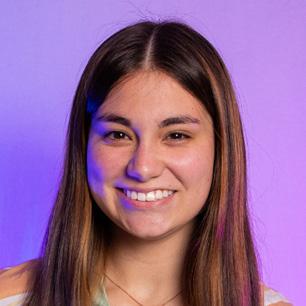
Ashley
— ashley.dorius@usu.edu
Page 10The Utah Statesman, April 15, 2024
Q&A By Essence Barnes
Kris Pfeiffer
SUBMITTED PHOTO
Ski patrol at Eagle Point Ski Resort attending a training in Beaver put on by USU extension.
Dorius is a first-year student studying English with a teaching emphasis. A Nebraska native, she loves exploring old bookstores, quoting New Girl, eating soft pretzels and being a Swiftie.
Aviation Week taking off for its third year with silent auction, helicopters, recital of drones
By Ella Stott LIFESTYLES REPORTER
Kicking off with a helicopter landing in the quad, the Aviation Technology program set the stage for the third annual Aviation Week.
Andreas Wesemann, the director of the professional pilot program, said although he grew up in Utah, he didn’t know Utah State had an aviation program until they were hiring for his position in 2014.
“I knew it was a chance in a lifetime,” Wesemann said. “I wanted to come back to Utah to give back and find a way to help others achieve their dream.”
Wesemann said Aviation Week has gotten better each year the program has done it.
“It’s a chance to do a couple of different goals,” Wesemann said. “The first is that I want to be visible on campus. It’s also a chance to highlight aviation in a powerful way for our students and the community.”
The first event of the week was Helicopter Day, where a helicopter landed on the Quad and students were welcome to come learn about it.
“It was just exciting to see so many people come by,”

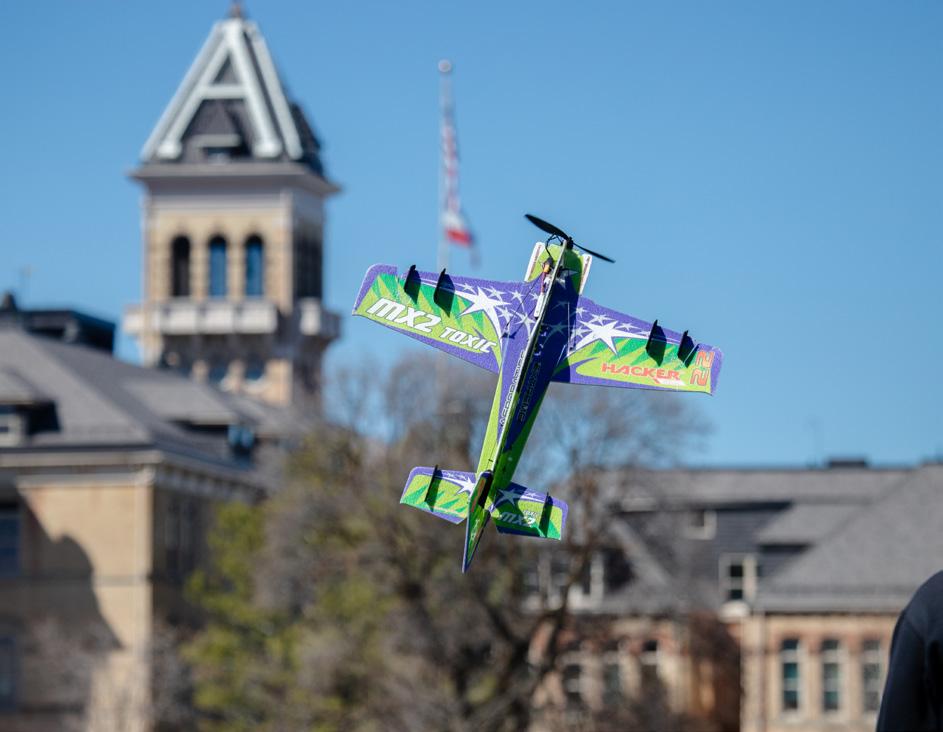
Wesemann said. “They didn’t know we had a helicopter program.”
Maizy Abbott, a sophomore majoring in the aviation professional pilot program, is the vice president of the Women in Aviation club.
According to Abbott, landing the helicopter on the first day of the week was an important way to get people excited about the program.
“Aviation Week is all about uplifting each other and creating a good support network,” Abbott said. “The helicopter was really fun to just show other people at the university who aren’t necessarily in our degree that we have the program and how cool it can be and how everyone can do it.”
On Monday evening, the aviation program met for the Aviation Week Banquet and Silent Auction event. Abbott said the banquet was the highlight of the week for her.
“We invite the community, students and faculty, and then we bring out guest speakers every year,” Abbott said. “The food’s awesome, and it’s just fun to see everybody and hear from a guest speaker.”
Wesemann said the banquet was a chance to recognize excellent students in the program.
“We honored nine of our students and graduates with outstanding awards,” Wesemann said. “It was just a fun time for our student clubs in a silent auction to raise funds.”
On Tuesday, there was a career conference in the TSC for students enrolled in and interested in the aviation program.
“It’s a chance for industry to come see us and students to meet them,” Wesemann said. “We do mock interviews and practice questions and really connected with the industry.”
Femke de Boer, a senior studying the fixed-wing emphasis in the aviation professional pilot degree, is the president of the Women in Aviation club.
According to de Boer, the career conference is especially useful to seniors preparing to graduate and go into the
professional field.
“Most of us are getting ready to leave, and we need to be prepared for that,” de Boer said. “I think a lot of us don’t come from airline families, so this is a great, free resource for us.”
Abbott said the impact of the career conference also stretched to members of the aviation program who weren’t going to graduate.
“You can always start making those connections,” Abbott said. “Networking is huge within aviation.”
The career conference also presented the opportunity for alum Marci Johnson to come back and visit USU.
Johnson is a captain on Horizon on the Embraer 175 aircraft. She said she attends multiple recruiting and informational events, but coming back to USU was both exciting and strange.
“It’s been a while since I’ve been back here, but it’s cool to still have a connection with some people,” Johnson said.
According to Johnson, coming back allows her to empathize with the students and give them advice for their futures.
“I’ve been in your shoes,” Johnson said. “Students are like, ‘This has been a struggle for me,’ and I’m able to say, ‘Oh, I understand. This is what I did to get through it.’”
On Wednesday, there was a drone event on the Quad, which highlighted the drone minor offered at USU.
“If you’re in the music program, you have a recital. Our students have a recital of flying drones,” Wesemann said. “It’s a way for them to showcase some of the things they’ve been working on: drone racing, piloting command, building sensors, guidance, control, even programming drones.”
Thursday included tours of the aviation maintenance facility and aircraft simulators. This event highlighted the 85-year-old aviation maintenance program. Mike Logan, the marketing, outreach and recruiting director for the aviation technology department, said both students and the public were invited to come look at what the aviation students had been working on. “We showed them our jet engine test cells, the only one in the region on a university campus,” Logan said. “Then we have pre-flight simulators that our students use, and we allowed the public to come and fly those.”

Page 11The Utah Statesman, April 15, 2024
— ella.stott@usu.edu
PHOTOS BY Dane Johnson
Talyn and Tytus Jeppson, two brothers from Cache Valley, practice flying drones with help from Ruby Jordan.
A remote-controlled airplane hovers in the air in front of Old Main during Drone Day on the Quad on April 3.
Wilderness First Responders help students adventure safely outdoors
By Lacey Cintron LIFESTYLES REPORTER
In a state like Utah where anyone can backcountry ski, river raft and mountain bike all in one place, wilderness expertise is essential for outdoor enthusiasts. At Utah State University, students can take the first step into wilderness medicine via the Wilderness First Responder course.
WFR certification is the standard for professional wilderness guides, instructors and those working in search and rescue. In a total of 80 hours, students learn how to handle medical emergencies in remote areas where access to a hospital is limited.
Greg Davis is the assistant director of outdoor programs and an administrator for the Moab WFR course. Davis found his passion for the outdoors in backcountry skiing, whitewater rafting and backpacking. “Turning my passion into an actual career is what initially drove my desire to get involved with wilderness medicine,” Davis said.
Davis has been teaching the course for 10 years.
“We have two courses that we offer: wilderness first responder and wilderness first aid,” Davis said. “Wilderness first responder is a much longer course and much more involved. It goes into more depth as far as skills and treatments.”


Students at both the Logan and Moab campus can register for a WFR class, which entails 80 hours in total of online coursework and hands-on training in the classroom and in the field.
“The most beneficial thing students learn is skills that can potentially save somebody’s life,” Davis said. “The most important thing is how to recognize life-threatening conditions and situations and how to deal with those.”
Harsh environments in remote locations offer unique challenges that require specialized knowledge to navigate. Through these courses, students learn crucial wilderness medicine skills, treatment options for a variety of injuries and patient assessment.
Anna Rupper is a fourth-year student in nursing who completed her WFR through USU and is now a trip leader for outdoor programs.
“The course has a lot of basic first-aid skills and indepth first-aid skills,” Rupper said. “A lot of it’s tied to being in the backcountry. We went over CPR, sucking chest wounds, trauma injuries, illnesses, how to treat those and get someone out safely.”
As a trip leader, treatments taught in WFR have helped Rupper ensure a safe experience.
“I’ve had a few illnesses come up and a few minor injuries,” Rupper said. “I’m not excited for people to get hurt, but I like being ready to use my skills.”
Becoming a trip leader was one of the main reasons Rupper completed her WFR and now leads backpacking trips, backcountry ski trips and kayaking.
“I lead the National Bridges trip every summer,” Rupper said. “I’ve led it two years in a row now, and it’s super cool because you get a fresh group of people coming to college, and you hike them up into the mountains
around Logan. Every time I’ve led that trip, it’s just been super engaging and exciting to bring new freshmen into Utah State.”
Davis has utilized WFR skills both individually and throughout his 15-year long career as a team lead for Cache County Search and Rescue.
“I’ve used these skills in my personal recreation and then I also do search and rescue,” Davis said. “I’ve definitely had some long rescues before that have taken all night.”


Lacey Cintron is majoring in psychology. She loves learning about the human mind, sharing stories and naps.
Page 12The Utah Statesman, April 15, 2024
— a02388032@usu.edu SUBMITTED PHOTOS
Students participate in the WFR course in Moab.
Students practice first-aid skills in Moab.
Cracking the coaching code
Recruiting
coaches across USU campuses
By Addie Hemsley SPORTS REPORTER
Recruiting coaches for both Utah State University’s Logan and Eastern campuses are similar and different in their own way.
Head women’s basketball coach Kayla Ard was dismissed on March 10, following the Utah State’s women’s basketball team’s loss to Boise State on March 10 in the first round of the Mountain West Conference tournament.
Just over a week later, the search for a new head men’s basketball coach began Monday, March 25, after head coach Danny Sprinkle announced he would take the head coach position at Washington University.
One of the most important factors for Sabau was the roster of student-athletes after Sprinkle’s exit.
“For me at Utah State and our athletics department, it was really a priority that we retained our locker room and tried to keep as many of our current student athletes on the men’s roster as possible,” Sabau said.
And while there are many statistics, graphs and numbers the committee can look at, there is a certain skill to recruiting according to Sabau.
“It is sometimes more of an art than a science, and everybody probably has their own way of approaching it.” Sabau said.
Similarly, USU Eastern’s Athletic Department considers many things when hiring a new coach.

Prior to Sprinkle’s announcement of his departure, athletic director Diana Sabau already developed a long and short list of candidates because, as an institution, they needed to be ready for the possibility of Sprinkle’s leaving. “Because of Danny’s great success, we needed to be ready if and when that process happened.” Sabau said. Danielle Jensen, assistant athletic director and head women’s volleyball coach shared some insight into their hiring process.
“Our department is different in that we do not keep or fire coaches based strictly on wins and losses. We generally do not look for new coaches until a coach has expressed interest in leaving or after a coach is done with the department,” said Jensen.
During the process of recruiting coaches, Sabau reached out to agents and coaches on her short list to determine who had an interest in our institution.
The athletic department considers many aspects of their prospective coaches. Who has a buyout on their contracts? Who has interests coaching in the Mountain West and growing USU’s current roster?
“Our first step is to look over all the applicants and narrow it down based on what we are seeing in their resumes. We will look and see who meets the qualifications and go from there. The second step to the process is a Zoom call with the committee and the applicant.” Jensen said. “The third and final part of the process, we bring applicants to campus to go through several more in-person interviews, then give a presentation and tour the campus. After this part of the process, the committee then meets to make a selection and hire a coach.”
The Logan campus’ athletic department assesses the applicants in a variety of ways.
“I used a search firm to vet and do extensive background checks and make sure no one we were interested in had anything that would be embarrassing to the institution or anything from past performance that would be of concern or not fit with our culture or values,” Sabau said.
When looking for a candidate who fit a profile of Utah State, Sabau said she was looking for someone that has a style fit for the Mountain West: a very fast, offensive and up-tempo pace that would bring success, along with the commitment to build a program here.
“Who could be the next coach here, that wouldn’t necessarily, even with success, leave quickly?” Sabau said.
“I would much rather renegotiate a contract for success rather than always having to find a new coach every year.”
The athletic department was looking for someone for both the men’s and women’s program that, holistically, had the highest character.
“Someone who is passionate, someone who has a lot of
energy, someone that could be a young modern coach or have philosophies that could resonate with our student athletes. Someone who is adaptable and nimble,” Sabau said. “We really need good teachers. The best teachers produce the best teams. A coach is truly just a teacher of young people.”
To help with the decision process, Sabau put together an interview committee of faculty athletics representatives, head coach, director of compliance, sport administrator and herself.
After they interviewed the top five candidates for both the women’s and men’s coach, they decided that two of them had risen to the top of the group that were brought to campus for on-campus interviews.
“We had some members of our men’s basketball team meet with those two people and some members of the women’s team meet with the two people for the women’s team as well.”
Both positions were filled quickly.
The search for a men’s coach started on Monday, March 25, and ended with an offer on Friday, March 29. On Saturday, March 30, former head coach at Youngstown University Jerrod Calhoun was named head men’s basketball coach at Utah State.
Two days later, on Monday, April 1, former assistant coach at Ohio State University Wesley Brooks was named head women’s basketball coach.
Sabau had previously worked as senior deputy athletics director at Ohio State, where both Calhoun and Brooks previously coached.
“Ironically, I did not know either of them while I was at Ohio State. At the time, I was already the deputy commissioner at the Big Ten Conference,” Sabau said.
Sabau used her connections from her former job to help make decisions in her current job.
“I do believe a lot of the people that have helped me in my career and I rely on and have given me good information throughout my career are in Ohio,” Sabau said.
“I respect Kevin McGough, the head coach of the women’s program at Ohio State. He’s had a period of longevity there and has been extremely successful there, and I knew someone from his system would be a good investment and would be a great head coach.”

Addie Hemsley is a junior studying English creative writing and journalism. In her free time, she loves watching movies, reading, writing, hanging with friends and playing all types of sports.
— addie.hemsley@usu.edu
Page 13The Utah Statesman, April 15, 2024
PHOTO BY Heidi Bingham
Diana Sabau, Wes Brooks and Jerrod Calhoun at the coaches’ announcement in the Wayne Estes Center on April 2.


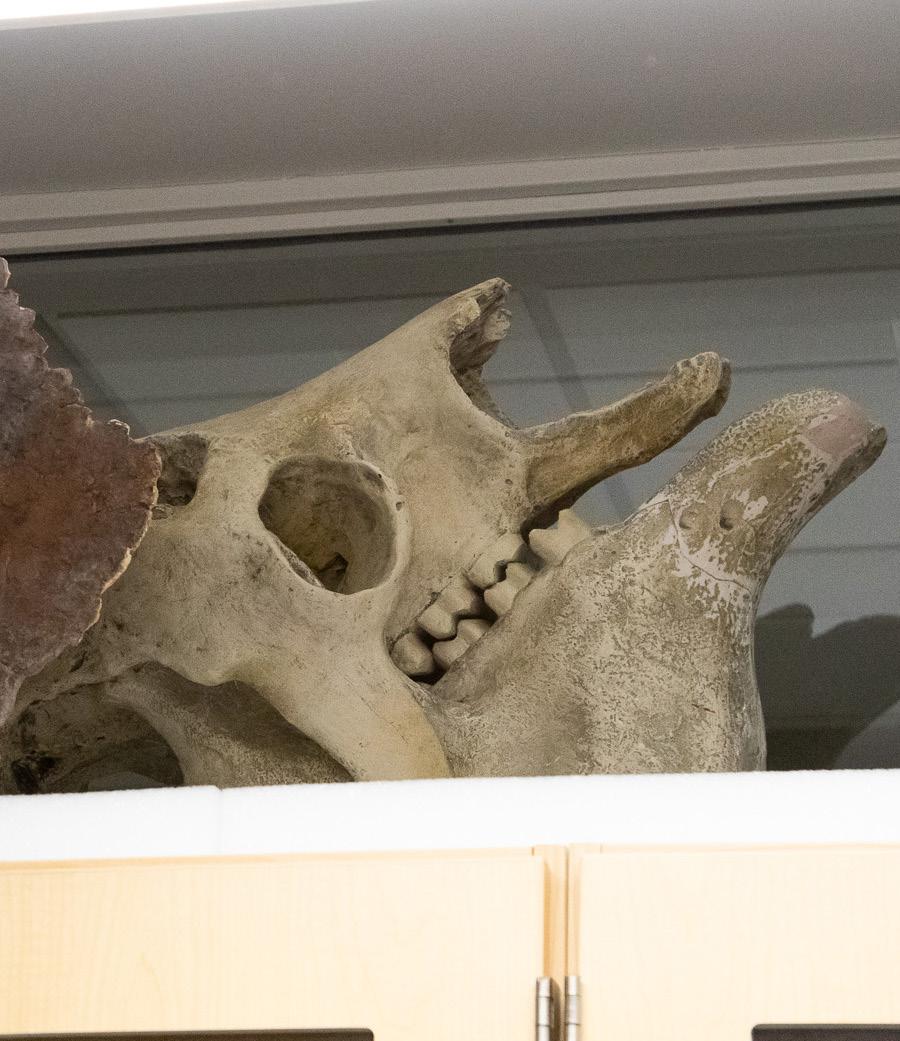




Page 14The Utah Statesman, April 15, 2024
R O C K S & R E L I
Heidi Bingham is a senior studying journalism. Her post-grad plans include getting a hammock like her boss Leah and reading more books.
—heidi.bingham@usu.edu
C S

Sudoku puzzles are provided by www.sudokuoftheday.com.
Last week’s solution:




Page 15The Utah Statesman, April 15, 2024

Page 16The Utah Statesman, April 15, 2024


















 By Sam Goodman
By Sam Goodman












































